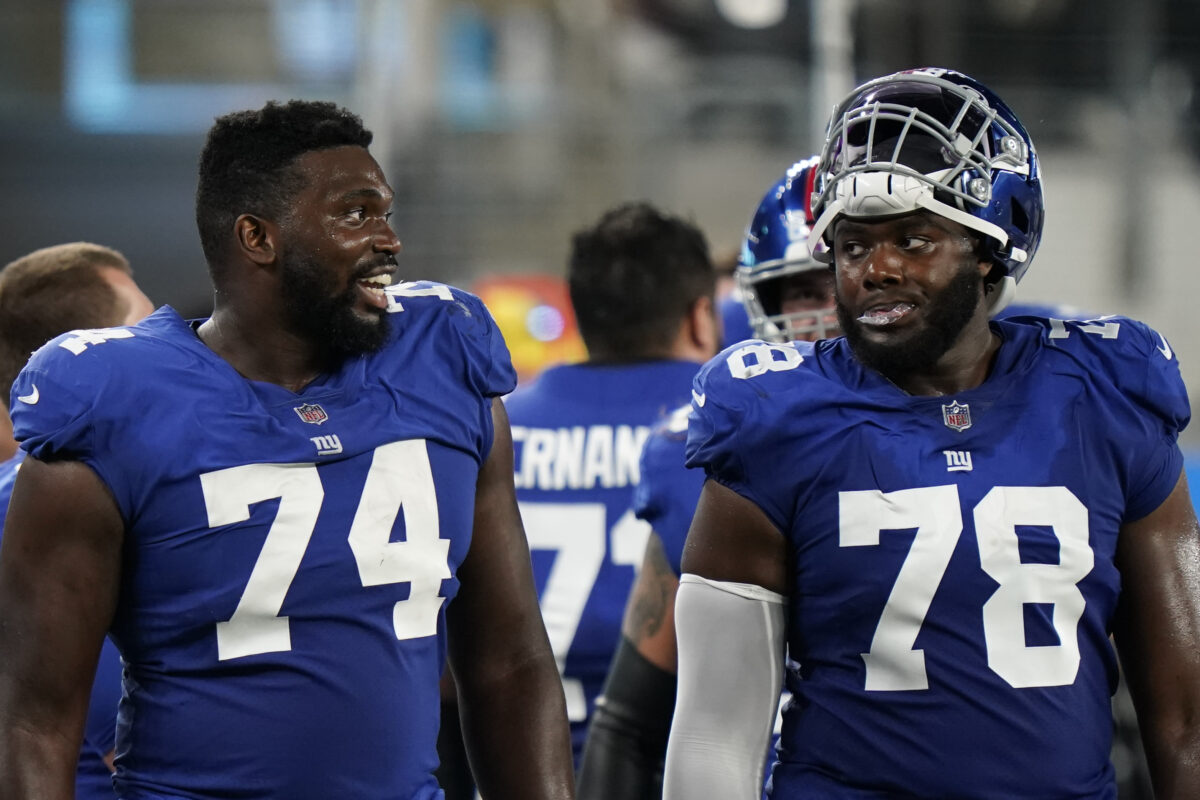The New York Giants own the fifth and seventh overall selections in the 2022 NFL draft and the consensus is that they will use one — or both — of those picks on bolstering their sagging offensive line.
Which leads us to ask: what, exactly, is the correct way to build an NFL offensive line in 2022? Should you attack it with your most valuable draft capital, focus on free agency or approach it with a strategy that simply brings in complimentary players that form the best unit?
The latter is likely the most successful approach as the line must perform as a singular unit to gain optimal results.
Thought of the day…you can build a functional/winning OL without spending 3-4 first round picks.
— Daniel Jeremiah (@MoveTheSticks) February 23, 2022
The Giants, throughout their history, have built their best lines that way — finding players that worked well together, draft status be damned.
In 1986, the Giants’ starting offensive line was comprised of an eclectic bunch head coach Bill Parcells coined “The Suburbanites,” as they showed up for work in vans and other family-oriented vehicles complete with baby car seats and child cup holders.
None of those players were what we would now call “Day 1 or 2″ draft picks.
Left tackle Brad Benson was an eighth round pick of the New England Patriots who the Giants signed in 1978 and had to endure some horrific seasons before the Giants became contenders and champions.
Left guard Billy Ard was also an eighth round pick (1981). Center Bart Oates and right guard Chris Godfrey were both undrafted players who the Giants signed after the league they were playing in — the USFL — went belly up. Right tackle Karl Nelson was the Giants’ third round pick out of Iowa State in 1983.
Full disclosure, by 1990 — the Giants’ second Super Bowl season of that era — only Oates was still in place. The Giants had replied the others with two first rounders (Eric Moore and William Roberts), a third rounder in Bob Kratch and a sixth rounder in Doug Riesenberg.
The Giants’ great lines of the mid-2000s, which set an NFL record for consecutive games stated as a unit, was also constructed from loose ends.
The only ‘blue-blooder’ on the line was guard Chris Snee, who was a second round pick in 2004 out of Boston College.
Center Shaun O’Hara was signed as a free agent after making his bones as a walk-on at Rutgers and a UDFA with the Cleveland Browns. Guard Rich Seubert was signed as a UDFA by the Giants in 2001 out of Western Illinois.
Right tackle Kareem McKenzie was signed as a free agent in 2005 after four seasons with the Jets. Tackle/guard David Diehl was a fifth rounder out of Illinois in 2003.
The Giants’ current line is a mish-mosh of players that has just one position spoken for with Andrew Thomas at left tackle. He was the team’s first rounder in 2020, but even he can be moved should the Giants find a better fit at the position.
There’s no doubt the Giants would be hard-pressed to pass on, let’s say Alabama tackle Evan Neal at No. 5 or No. 7, but if there are players there that they simply can’t pass on, or a franchise-changing trade offer, they might go the route they’ve taken in the past.
[pickup_prop id=”14193”]
[lawrence-related id=688522,688519,688516]
